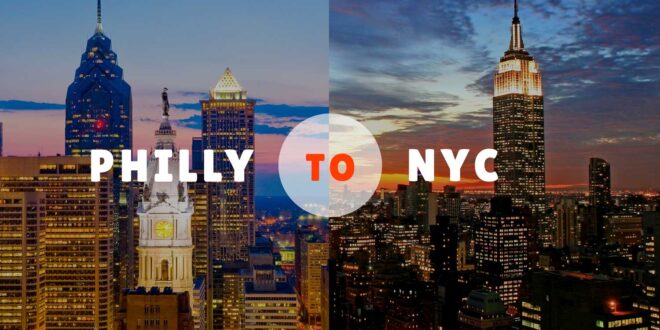The bustling streets of New York City and the historic charm of Philadelphia are separated by just about 95 miles, making travel between these two iconic cities a common endeavor for many. Whether you’re planning a day trip, a weekend getaway, or a regular commute, understanding the cost implications of driving versus taking the bus is essential.
Both options have their merits and pitfalls, and your choice will depend on various factors including budget, convenience, and personal preferences. To help you make an informed decision, let’s break down the costs and benefits of each mode of transportation.
When planning to travel from Philadelphia to New York, one of the primary considerations is the overall cost of the journey. This includes not just the obvious expenses like gas or bus tickets but also hidden costs such as tolls, parking fees, and vehicle wear and tear. For those driving their own cars, the flexibility of leaving on your schedule and taking spontaneous detours can be appealing. However, the financial aspect might be a different story.
Driving Costs: The Breakdown

Driving from Philadelphia to New York involves several cost components. Gas prices fluctuate, but on average, you might spend about $20-$30 for a round trip. Tolls are another significant expense, with major toll roads such as the New Jersey Turnpike adding approximately $15-$20 to your travel cost each way.
Parking in New York City can be particularly pricey, often ranging from $30 to $50 per day, depending on the location and duration of your stay.
Additionally, consider the wear and tear on your vehicle, which, although not an immediate out-of-pocket expense, contributes to long-term maintenance costs.
Bus Travel: The Budget-Friendly Option

Taking a bus from Philadelphia to New York is generally more economical. Several bus companies operate on this route, offering competitive prices that can range from as low as $10 to $30 per trip, depending on how far in advance you book and the time of day you travel. Unlike driving, there are no tolls, parking fees, or concerns about vehicle maintenance.
Buses also offer the advantage of allowing you to relax or work during the journey, potentially making your travel time more productive.
Convenience and Flexibility

While cost is a significant factor, convenience and flexibility also play crucial roles in choosing your travel method. Driving provides unmatched flexibility, allowing you to leave whenever you want, make stops along the way, and potentially reduce travel time if traffic conditions are favorable. However, the stress of navigating busy highways and finding parking in New York can be considerable downsides.
Environmental Impact
Considering the environmental impact of your travel choice is becoming increasingly important. Driving a personal vehicle contributes more to carbon emissions compared to taking a bus.
Time Considerations
Time is another critical factor. Driving can potentially save you time if you avoid peak traffic hours, but the unpredictability of traffic conditions can also lead to significant delays. Bus travel times are usually more consistent, with most trips taking around two hours.
Final Thoughts
Ultimately, the decision between driving and taking the bus from Philadelphia to New York boils down to your personal priorities. If you value flexibility and are comfortable with the potential costs and stress of driving, taking your car might be the way to go. However, if you prefer a cost-effective, environmentally friendly, and stress-free journey, the bus is likely your best bet.
 Hi Boox Popular Magazine 2024
Hi Boox Popular Magazine 2024



